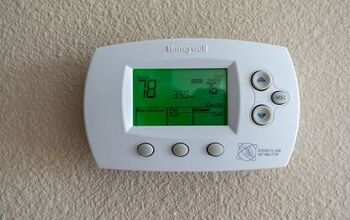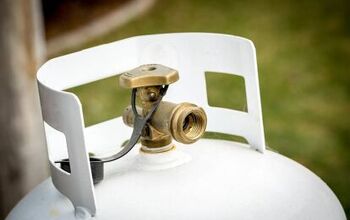How To Prevent Mold In The Garage

Whether you park your car in the garage or use the space for storage, mold is the last thing you want to see. Mold is unnerving no matter where it is, and most homeowners would do anything to prevent it. You understandably may wonder how to prevent mold in the garage.
The best way to prevent mold in the garage is to seal the door and clean the floor drain. You can also keep mold out of your garage if you set up a fan or install a ventilation system. Declutter your garage to boost airflow, and install a window to let sunlight in.
Avoid washing your car in the garage, or else you will introduce too much moisture to the space. It’s worth setting up a dehumidifier in your garage if it’s frequently humid. Follow along as we explore how to prevent mold in the garage so you can avoid remediation costs.
What Causes Mold In A Garage?
Water damage, humidity, and darkness are the main causes of mold in a garage. Garages are typically dark, as they’re often closed the majority of the time. This, paired with humidity and spills, creates the perfect conditions for mold to grow.
You are likely to find mold in a garage that does not have a floor drain. That is why garages are typically required to include them today. Otherwise, water can pool in your garage and quickly increase the humidity in the air, which causes mold to grow.
How To Keep Mold Out Of The Garage
1. Seal The Door
Unfortunately, water and bugs can easily sneak under your garage door if it isn’t sealed. Many homeowners forego sealing their garage doors to save money. That said, it only costs $120, on average to install a garage door seal.
The low-end cost to install a garage door seal is $80, and it rarely costs more than $180-$200. Garage door seals are essential if your driveway slopes down toward your garage. It’s an easy way to prevent mold in a garage and keep bugs and water out.
2. Declutter
The more cluttered your garage is, the easier it is for mold to grow. Clutter can cause mold problems for many problems, such as reduced airflow. That's especially true if you use your garage as a storage space.
Clutter can also retain moisture, which makes it easier for mold to grow. Replace your cardboard boxes with plastic totes since the surface won’t retain water. It’s also worth keeping your garage clean to ward off spiders and reduce the fire hazard.
3. Boost Ventilation
Mold and mildew thrive in poorly ventilated spaces. Stagnant air contributes to humidity and ultimately makes it easier for mold to grow. You can improve the airflow in your garage if you install a new ventilation system.
Garage ventilation systems typically cost $2,500 to $8,000 to install. This comes in handy if you do lots of work in your garage and struggle with mold prevention. However, many homeowners can get by with a simple exhaust fan to boost ventilation.
Exhaust fans cost $200, on average, and they rarely cost more than $300 to set up. This is more than enough if you have a small garage, and you don’t struggle too much with mold.
4. Unclog The Drain
Garage drains are essential to remove water and oil — that is when they are clean. Unfortunately, garage drains are susceptible to clogs because of how much debris they encounter. Whether it be fallen leaves, rocks, sawdust, or oil, garage drains can easily get clogged.
You can tell that is the case when water pools above the drain. Luckily, it’s easy to unclog a garage drain with simple measures, such as a plunger or baking soda and vinegar. First, plunge the drain several times to dislodge debris within it.
Next, pour ½ cup baking soda and ½ cup vinegar down the drain so it can dissolve and loosen debris. This process takes between 30 and 60 minutes, depending on the severity of the clog. If that doesn’t work, you may need to use a drain snake or hire a plumber to unclog your garage drain.
5. Use A Dehumidifier
A dehumidifier is just as useful in a garage as it is inside your home. Garages are prone to humidity, whether it be because of the weather or due to water leaks. Excessive humidity can cause rust to form on the car, tools, and shelves in your garage.
While you should do whatever you can to naturally reduce humidity, a dehumidifier is essential for a moist garage. You can use a standard household dehumidifier, but you may need a stronger one depending on the size of your. For example, a greenhouse or basement dehumidifier works well in many large garages.
Keep in mind that it takes up to 12 hours for a dehumidifier to work. That’s why you must be patient and stick with it, or else you won’t see results. Look for a 70-pint dehumidifier if your garage is large and very wet a lot of the time. Keep the humidity between 35% and 60% for the best results.
6. Wash Your Car In The Driveway
Washing your car in the garage may be tempting, but that is quite risky. It can take many hours for your car to dry, and water can pool on the floor. Even with a floor drain, you will still introduce excessive moisture to your garage.
Ideally, you should wash your car in the driveway and leave it in the sun to dry. Don’t park your car in the garage until it is dry. This is also a great idea when coming home from a professional car wash.
7. Improve Drainage
Depending on how old your home is, your garage may not have adequate drainage. Some old, outdated homes even have garages without drains at all. In that case, water can easily pool and stand for hours and days, which causes mold.
Whether you have poor drainage or no drain, you must do something to prevent pooling water. Ideally, you should install a new drain, catch basin, or channel to remove standing water. French drains are particularly effective, and they cost $50-$60 per linear foot to install.
8. Replace Your Garage Door
Old, outdated, and bent garage doors can contribute to mold and mildew conditions. Garage doors typically last 15 to 30 years before they must be replaced. Physical trauma and damage from the weather can eventually cause garage doors to warp, bend, and rust.
It’s all too easy for water to seep into a garage from the bottom and sides once this happens. In that case, your best option is to simply replace your garage door. The average cost to replace a garage door is $2,743, but it varies.
Factors such as materials, type, labor, and how many doors there are affect the cost. For example, a one-door garage costs $1,500 to $6,500 to install whereas installing a two-door garage costs $3,600, on average. It’s worth the cost to hire a professional to replace your garage door, as it’s difficult and even dangerous because of the weight.
9. Let More Light In
Darkness is one of the main causes of mold in a garage, and it’s easy to see why. After all, many garages only get sunlight when they are open. You are more likely to encounter mold if your garage doesn’t have any windows.
Installing garage windows is pricey, but you probably don’t need more than one. You can expect to spend $800 to $1,000 to install a window in your garage. The cost depends on the type of window, window size, materials, and labor.
Otherwise, you can simply air your garage out occasionally. This is a great idea when you notice moisture in your garage on warm, sunny days. Set a timer so you remember to close your garage door before it gets dark.
Summing It Up
You can prevent mold in your garage if you keep it clean and unclog your floor drain. Install a ventilation system to improve airflow in your garage, or simply set up a fan. Run a dehumidifier for 12-24 hours or longer if your garage exceeds a humidity level of 60%.
Related Guides:

Nick Durante is a professional writer with a primary focus on home improvement. When he is not writing about home improvement or taking on projects around the house, he likes to read and create art. He is always looking towards the newest trends in home improvement.
More by Nick Durante















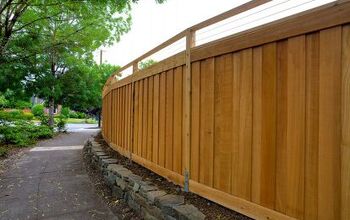




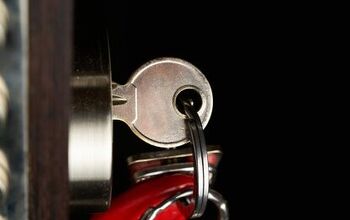

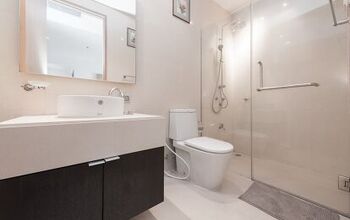
![10 Most Dangerous Neighborhoods in Baltimore [Updated]](https://cdn-fastly.upgradedhome.com/media/2023/07/31/9075655/10-most-dangerous-neighborhoods-in-baltimore-updated.jpg?size=350x220)


